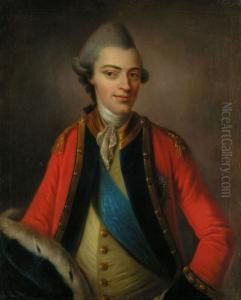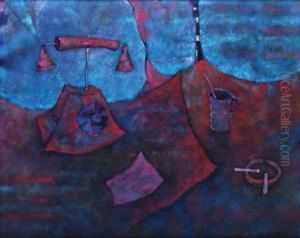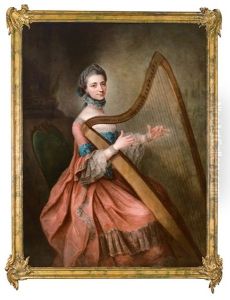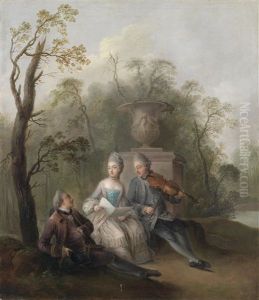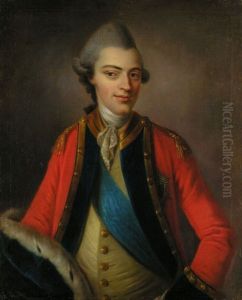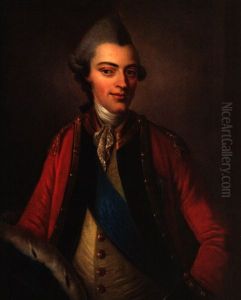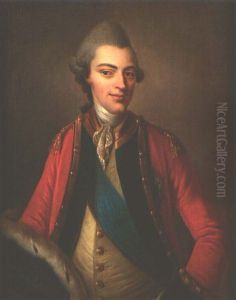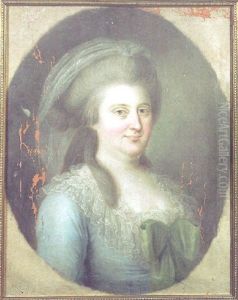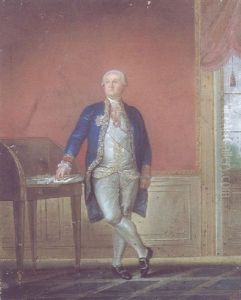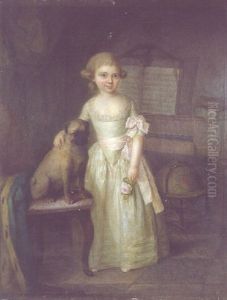Daniel Woge Paintings
Daniel Woge was a German Baroque painter and engraver born in 1686 in Strasbourg, which at the time was part of the Holy Roman Empire and is now located in modern-day France. Woge is not as widely recognized today as some of his contemporaries, but he was known for his portrait work and for capturing the likenesses of the bourgeoisie and aristocracy of his time.
Woge received his artistic training likely in Strasbourg or in a nearby art center. During his career, he became known for his meticulous and detailed portraits. He worked primarily in oils but was also skilled in the art of engraving. His portraits are characterized by their clarity, attention to the texture of fabrics, and the subtle rendering of his subjects' expressions, which often conveyed a sense of their social status and personal identity.
Despite his skills, there is not a vast amount of information readily available about Woge's life and career. What is known is that he operated during a period rich in artistic production, where Baroque art was giving way to the Rococo movement. His style, however, remained firmly rooted in the traditions of Baroque portraiture, focusing on the realistic depiction of his subjects with a strong emphasis on naturalism.
Daniel Woge died in 1739, and while he did not gain the same level of fame as some of his peers, his works nevertheless contribute to the rich tapestry of Baroque art. His portraits still provide a valuable glimpse into the fashions and faces of the 18th century European middle class and nobility. Unfortunately, because of the relative obscurity of his work, his influence on subsequent generations of artists was limited. Nonetheless, for those studying the period and the genre of portraiture, Woge's paintings offer insight into the era's aesthetic and social dimensions.
